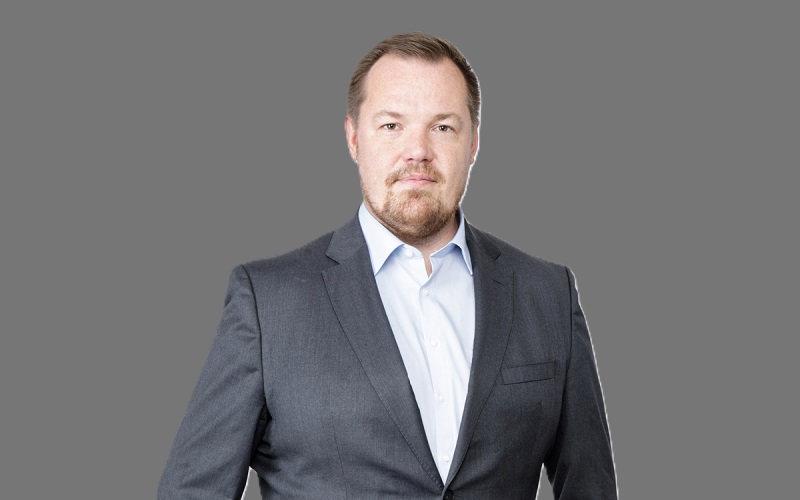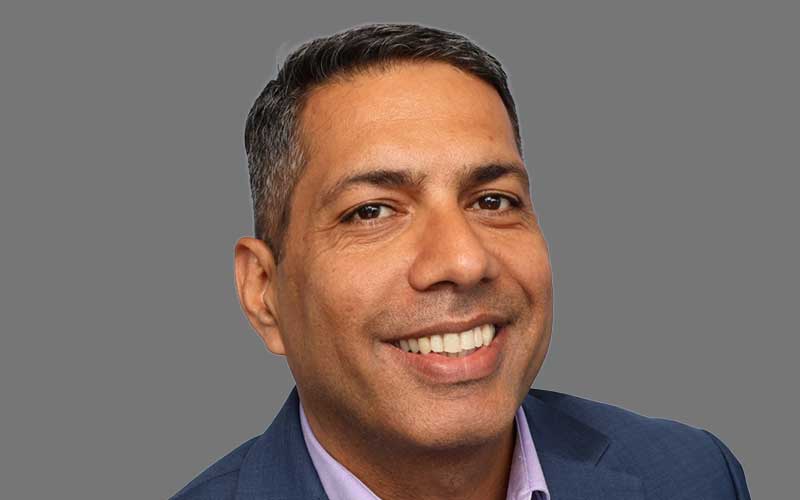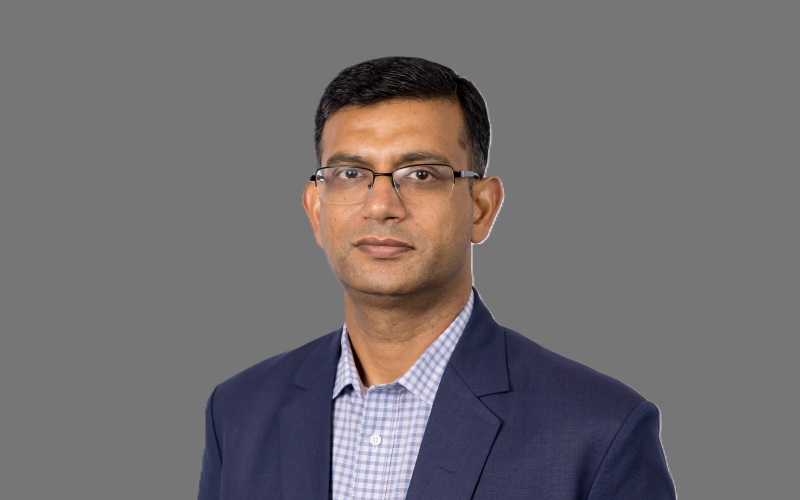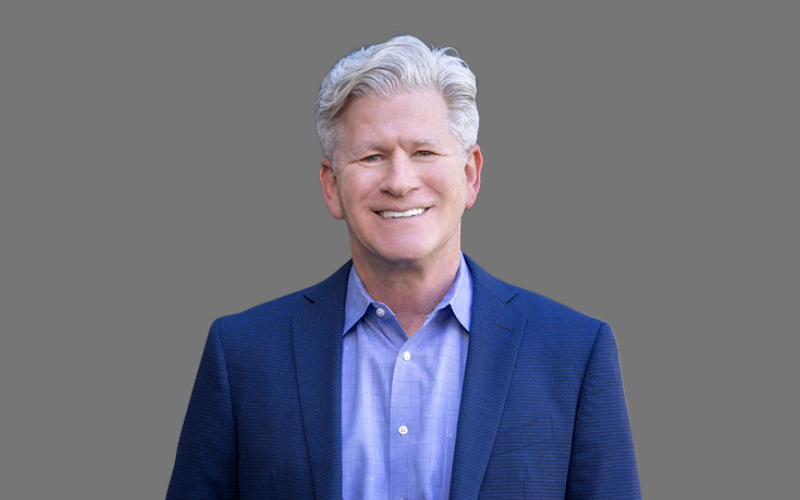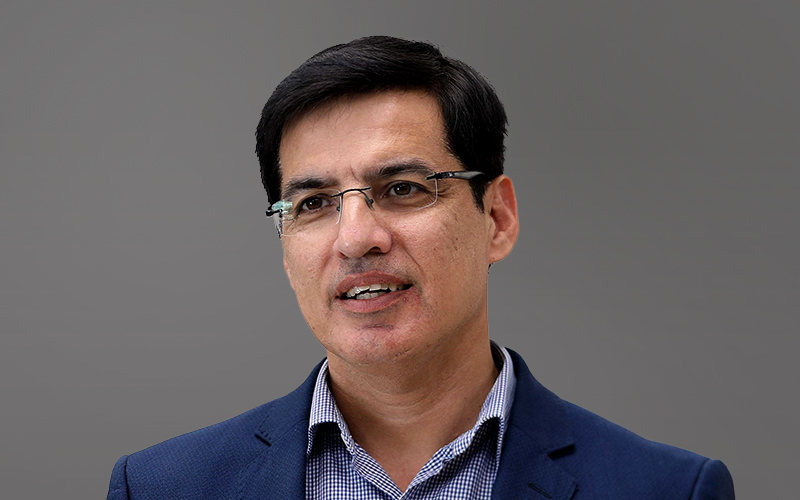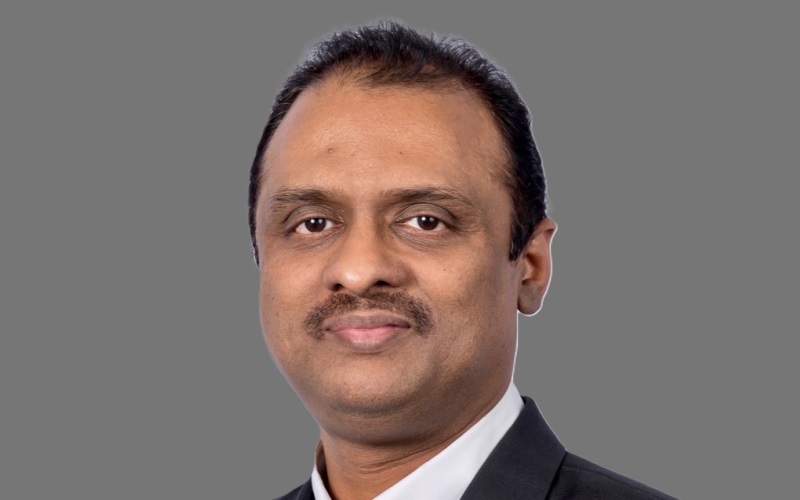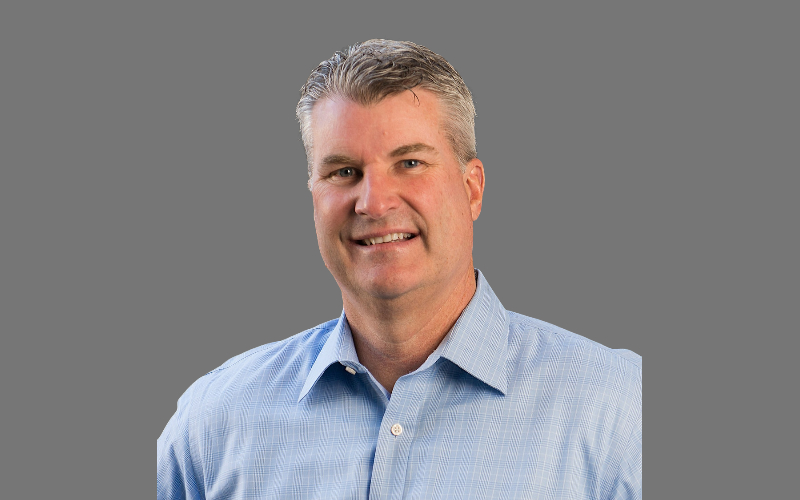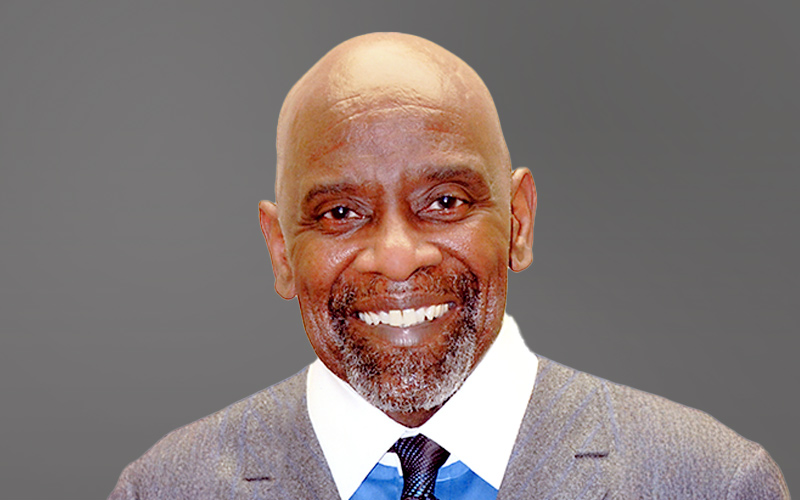
Insight Snapshot
Welcome to the Americas Confluence 2025 Insight Snapshot
Dive into the heart of Infosys Americas Confluence 2025 with real-time insights. Stay informed with session previews, updates, key moments, inspiring quotes, highlights, and takeaways from Day 1, 2 and 3. Whether you’re attending in person or following along online, our live updates will keep you connected to all the action, insights, and innovations as they happen. Don’t miss a beat of this year’s most anticipated event!
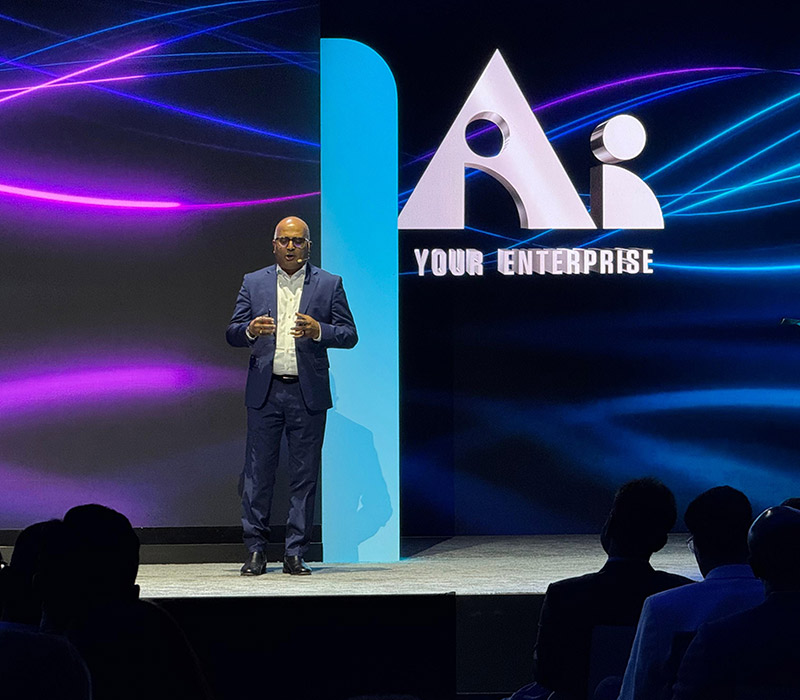
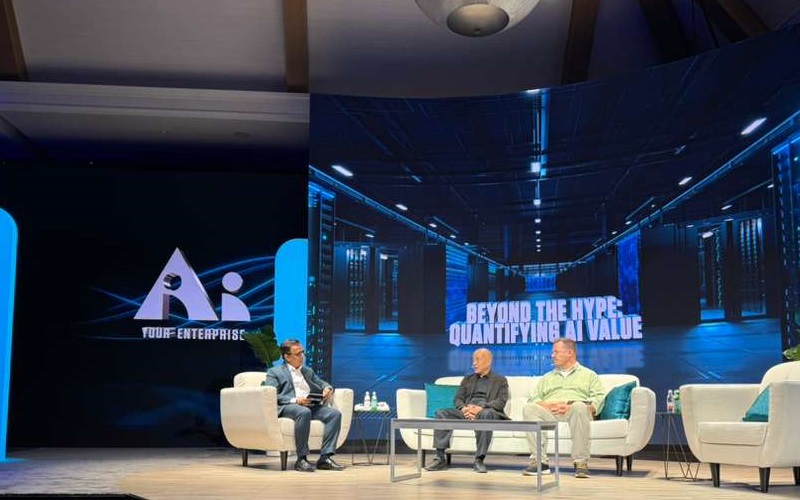
Beyond the Hype: Quantifying AI Value
Quantifying AI Value: From Hype to Measurable Impact
AI’s potential is clear; its value is not. In a candid discussion at Confluence, Steve Taw (Capital Group) and Lari Hämäläinen (McKinsey & Company) tackled the hardest question facing executives today: how do you measure AI’s real business impact, beyond the hype?
Taw admitted no one has fully solved the ROI puzzle, particularly with generative AI’s speed and unpredictability. Capital Group uses a dual approach: enterprise-wide standards combined with federated business-unit ownership.
Read more
Outcomes range from freeing 100+ FTEs through automation to accelerating marketing content creation. The key, Taw argued, is starting from outcomes and working backward to metrics that matter.
Hämäläinen reframed the automation narrative, warning leaders not to fixate solely on efficiency. True value, he said, comes from four levers: efficiency, product and service competitiveness, talent renewal, and capital reallocation to growth. Automation creates room to invest, but long-term health depends on reinvention, not just cost-cutting.
Both leaders stressed that AI investment decisions should balance revenue growth, scale efficiencies, customer experience, and firm health (including infrastructure and security). Early adoption may require “leap of faith” funding, but maturity demands sharper KPIs tied directly to customer and operational outcomes.
Industry adoption is accelerating across the board. Life sciences is at the forefront, reimagining drug discovery, clinical trials, and regulatory approval. Yet Hämäläinen noted that what truly sets this AI wave apart is universality: executives themselves are now daily users of AI tools, creating urgency to scale use cases across industries simultaneously.
The session closed with two telling reflections. Taw: “If AI could remove one task, it would be meetings.” Hämäläinen: “Today, AI is prelude. Tomorrow, it’s symphony.” For executives, the message was clear: the score is being written now—measuring value is the leadership imperative.
Speakers
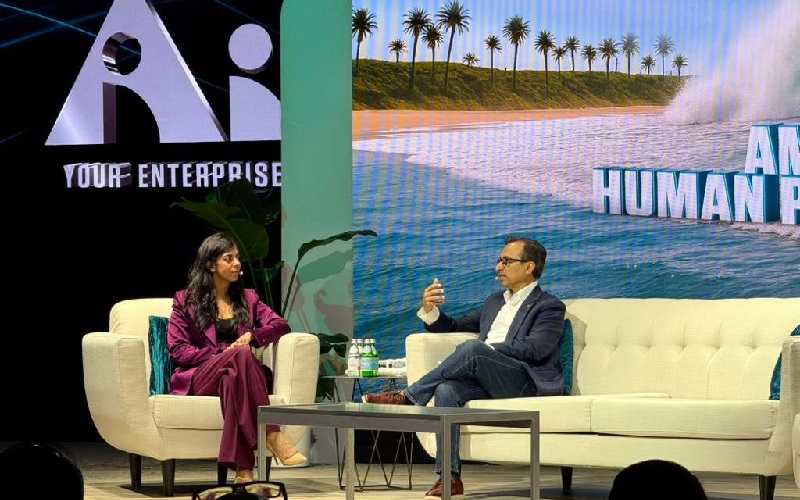
Building your Data Enterprise: A Business case study of PG&E
PG&E’s CIO on AI: From Hackathons to Nuclear Specialists
For Ajay Waghray, CIO of PG&E, AI isn’t about pilots or proofs of concept. It’s about unleashing innovation at scale—by democratizing AI literacy, embedding it in core processes, and ensuring value capture reaches the P&L, not just efficiency dashboards.
PG&E has used automation and AI for decades—from wildfire prediction models to asset monitoring.
Read moreBut the current wave is different: generative AI has created what Waghray calls “the moment for every human to become AI literate.” Through “level up” training and hackathons, more than 6,000 employees have been equipped to design and test AI solutions.
This grassroots approach has produced bold use cases. Most striking: a nuclear operations specialist AI built with NVIDIA, capable of ingesting five million documents to support PG&E’s Diablo Canyon nuclear plant. It accelerates onboarding, simplifies technical decision-making, and boosts productivity by up to 60%, while keeping humans in the loop for safety.
Other applications include “Peggy,” PG&E’s customer-facing AI bot, which has delivered 25–30% improvements in customer management costs, and AI-enabled digital twins of energy assets to enhance resilience. These initiatives align with Waghray’s tripod model for scaling AI:
- Foundation – secure, responsible infrastructure.
- Democratization – widespread employee engagement.
- Execution – focus on a few high-value use cases with enterprise-wide impact.
The hardest part, he noted, is getting started—laying a “good enough” foundation and moving quickly to execution, rather than chasing perfection. But execution also creates a new challenge: moving from efficiency gains to efficiency capture. To do this, Waghray is building a “trifecta” of accountability, aligning finance, business, and IT leaders on measurable value delivered.
His message was clear: AI literacy and disciplined execution, not endless pilots, will define which enterprises turn potential into performance.
Moderator

Nayeema Raza, Journalist & Filmmaker
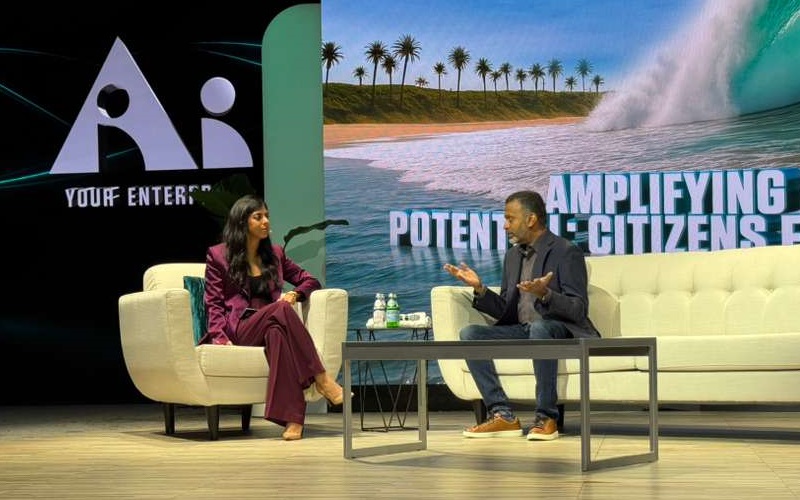
Amplifying Human Potential: A Business Case Study of Citizens Financial Group
Citizens Bank: From AI Hype to Human-Centered Value
For Krish Swamy, Chief Data & Analytics Officer at Citizens Financial Group, the real AI story isn’t algorithms—it’s people. Technology will soon be ubiquitous, even commoditized. What matters is how humans use it, avoid “AI slop,” and apply it to amplify judgment, productivity, and customer value.
Swamy framed Citizens’ transformation through an iceberg analogy: AI is the visible tip, but the real foundation is data.
Read more
Five years ago, Citizens launched its cloud migration, modernizing infrastructure and simplifying access. That investment has paid off by enabling a data marketplace—a curated platform where thousands of employees now access trusted data, up from just hundreds a year ago. Adoption has surged 20x in six quarters, proving that people embrace tools when foundations are solid and well-communicated.
Citizens applies this framework through three priorities:
- Focus on value—every project must tie to customer or business impact.
- Build strong foundations—cloud, modern data, and simplified architecture.
- Enable people—through education, marketing, and recognition programs that drive adoption.
Swamy likens this to Formula One: you need both a great car (technology) and a great driver (talent). Without both, the race is lost.
Use cases illustrate this approach. The data marketplace democratizes access, while advanced profitability analytics now integrate customer, household, and corporate relationships—replacing fragmented Excel models with a single source of truth. Leaders can finally see customer P&L across the enterprise, improving service and profitability.
Swamy cautioned against over-fixation on AI’s novelty. The true differentiator is how organizations change expectations, habits, and accountability. Citizens uses carrots and sticks: public recognition of “power users” and top learners, paired with governance that discourages fragmented, duplicative work.
His message to executives: AI will be everywhere. Competitive advantage comes from how you prepare people, simplify foundations, and relentlessly link projects to value.
Moderator
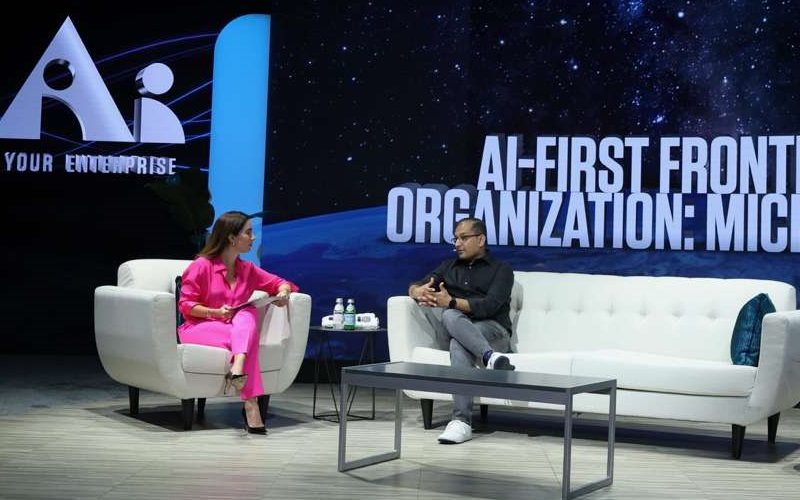
Building the AI-first Frontier Organization: A Business Case Study of Microsoft
Microsoft on Building the AI-First Frontier Organization
AI adoption is accelerating—but trust and security remain the make-or-break factors. Rudra Mitra, Corporate VP at Microsoft, argued that becoming an AI-first enterprise requires more than deploying agents. It demands weaving security, governance, and cultural readiness into the foundation from day one.
Read more
Mitra noted the scale of the challenge: 7,000 identity attacks per second, nearly double last year’s rate. At the same time, Microsoft’s research shows 82% of organizations plan to deploy AI agents within 12–18 months to stay competitive. The paradox is clear: productivity demands unprecedented data access, yet that very access multiplies risk.
Microsoft’s strategy, anchored in Purview for AI, tackles this tension directly. By embedding controls around identity, data access, and monitoring, Purview helps enterprises unlock AI’s potential without losing trust. The bumper-sticker version, Mitra quipped: “Humans and AI move data. Protect that.”
Partnership is also essential. Mitra highlighted Microsoft’s collaboration with Infosys to help enterprises navigate AI adoption without paralysis. Success requires ecosystem-wide alignment, not siloed efforts.
The cultural dimension matters just as much as the technical. Drawing on Satya Nadella’s philosophy, Mitra emphasized three attributes of AI-first organizations:
- Growth mindset—approaching AI as tomorrow’s technology, not retrofitted onto yesterday’s processes.
- Augmentation, not replacement—cAI should elevate human capability, creating “superhumans.”
- Shared learning journey—no company has all the answers; leaders must lean in collectively to evolve best practices.
For executives, the message was blunt: don’t bolt on security later. Build it in now. Those who wait risk stalled deployments and eroded trust. Those who act can transform AI from hype to competitive advantage—by making security and trust the ultimate differentiators in an AI-first world.
Read less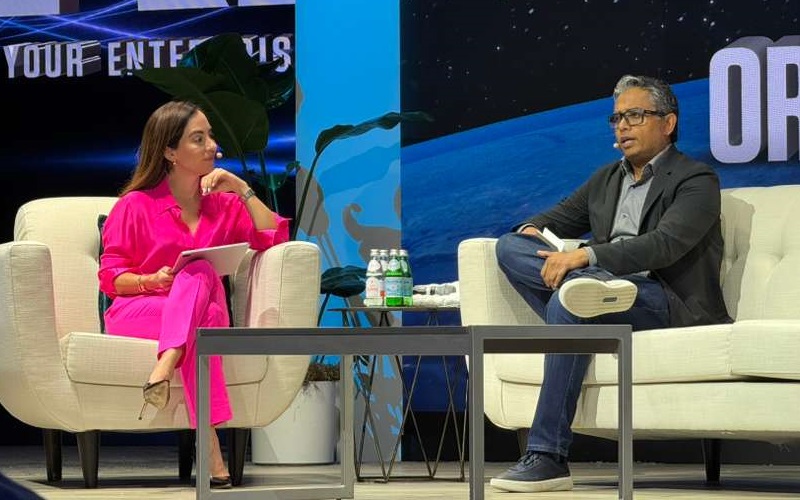
Building the AI-first Frontier Organization: A Business Case Study of Nutrien
Nutrien’s AI-First Ambition: Feeding the Future with Intelligence
For Debasis “DB” Bhaumik, VP of IT at Nutrien, AI isn’t a buzzword—it’s central to the company’s mission of feeding the future. As the world’s largest crop inputs provider, Nutrien views AI as a lever to boost yields, strengthen grower relationships, and tackle global food insecurity.
Read moreBhaumik stressed that being AI-first requires balancing grassroots innovation with disciplined governance. At Nutrien, any employee can propose an AI idea, but it must be sponsored by a senior leader and reviewed by an AI council spanning legal, IT, and business leadership. This ensures experimentation is tied to business value, not “shiny objects.”
The company rejects endless pilots. Instead, each idea is given six weeks to prove viability. Projects either fail fast or build a full business case for scaling. This discipline has moved dozens of use cases into production—more than many peers—while maintaining strategic alignment and financial rigor.
Nutrien frames AI opportunities in three buckets:
- Everyday AI – tools like copilots that will soon be as ubiquitous as email.
- Continuous improvement – enhancing existing processes, such as safer, surface-level potash mining.
- Game changers – bold bets to transform grower experiences, powered by Nutrien’s unmatched network of agronomists and customer trust.
For Bhaumik, the secret sauce is not technology but people, adaptability, and purpose. Drawing from personal experience of food insecurity, he underscored the importance of humility and resilience. Technology is widely available; what differentiates leaders is vision, discipline, and the ability to mobilize people around bold goals.
His message to executives was clear: AI-first organizations aren’t built on tools alone. They emerge when purpose, governance, and people align to turn technology into tangible value.
Read less
The Art of Winning: On and Off the court with Martina Navratilova
Martina Navratilova on Winning, Risk, and Staying True to Yourself
Greatness isn’t built on trophies alone—it’s built on reinvention, resilience, and authenticity. At Confluence 2025, Martina Navratilova, 18-time Grand Slam singles champion, shared lessons from a career spanning decades, rivalries, and reinventions—offering executives a playbook for sustained success under pressure.
Read more
Navratilova credited early support from family and coaches with shaping her drive, but stressed that persistence and self-belief mattered more than talent. Her aggressive, net-charging style was a calculated risk—one that went against orthodoxy but ultimately defined her dominance. “Calculated risk,” she noted, “is what separates winners from followers.”
Her long rivalry with Chris Evert illustrated another principle: competition sharpens excellence, but respect sustains it. Though fierce on court, they remained collaborators and friends, demonstrating that healthy competition can raise performance without eroding trust.
Adaptability was another recurring theme. Navratilova reinvented her game at 32, overhauling technique to match advances in equipment and athleticism. “You have to evolve,” she said. “I was never afraid to try new things, because I could always go back to the old way.” For today’s leaders, the parallel is clear: embrace change before necessity forces it.
Beyond sport, Navratilova has been a pioneering LGBTQ+ advocate since 1981, urging executives to use their platforms for positive change. Her advice: “Don’t listen to your head or your heart—listen to your gut. And don’t be afraid to ask for help—or to be the one others can ask.”
Asked what it takes to be a champion, Navratilova was blunt: perseverance, self-honesty, and kindness to oneself. Winning, she argued, is less about outcomes than about consistently showing up with effort, integrity, and the willingness to adapt.
For business leaders, her message resonates: boldness, reinvention, and authenticity aren’t just traits of champions—they’re prerequisites for enduring success.
Speakers
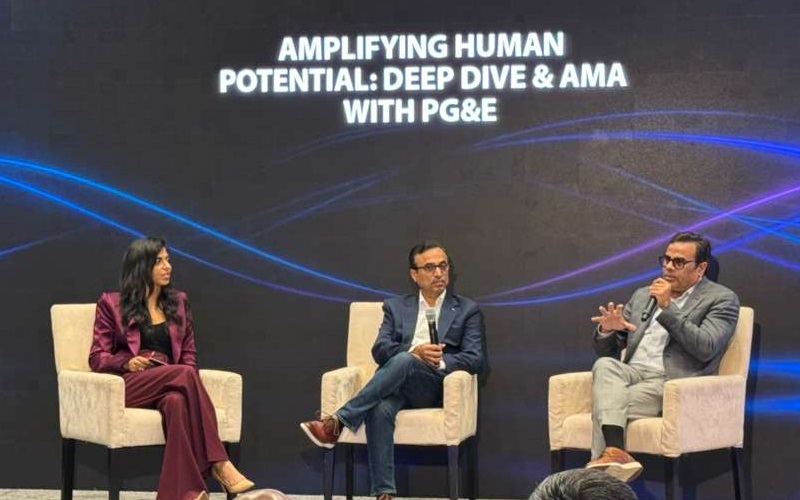
Deep Dive & AMA with PG&E
From “no pilots” to self-healing grids
For Ajay Waghray, EVP & CIO at PG&E, AI isn’t a lab toy—it’s how a crisis-tested utility delivers both safety and reliability. Forged in California’s wildfire era, PG&E’s stance is clear: skip the pilot purgatory, fund data foundations through real use cases, and execute relentlessly.
Waghray, joined by Infosys EVP Ashiss Dash, framed PG&E’s approach as an “and game”—power and safety—driving three reinforcing loops: foundation, democratization, and execution.
Read moreUse cases aren’t side projects; they are the budget engine that justifies platform upgrades (Snowflake, Foundry), process mining (Signavio), and responsible-AI guardrails spanning legal, HR, PR, and ops.
Endless pilots are out. PG&E moves from idea to production when a use case proves tangible value—risk reduction, outage minutes saved, customer trust gained. That discipline now underpins millions of automated customer interactions (via PolyAI and guided knowledge), 30–40% faster agent ramp-ups, and “smart ETOR” models that predict restoration by unifying smart-meter, asset, sensor, and customer data.
PG&E frames AI value across three buckets:
- Grid Safety & Reliability – Enhanced power-line safety settings, sectionalization devices, and pole-mounted sensors (e.g., GridScope) catch anomalies earlier and shrink outage blast radius.
- Customer Operations at Scale – GenAI accelerates training, resolves 4–5M calls, and personalizes restoration updates anchored in unified data.
- Planning & Decarbonization – A San Jose digital twin layers GIS, LIDAR, ADMS/SCADA, and undergrounding to fast-track design, permitting, and net-zero scenarios—Dash calls it a “sandbox with a brain.”
Speed doesn’t sacrifice resilience. Every AI use case passes a governance funnel; technology debt is retired (e.g., S/4HANA), so innovation isn’t built on cracks. Planning horizons have shortened to quarters, but the audacious north star endures: “Catastrophic wildfires shall stop.”
The takeaway for leaders: AI-first utilities aren’t tool-first. They’re purpose-first—aligning mission, governance, platforms, and people to convert intelligence into safer grids, faster restoration, and measurable public good.
Moderator

Nayeema Raza, Journalist & Filmmaker
Speakers
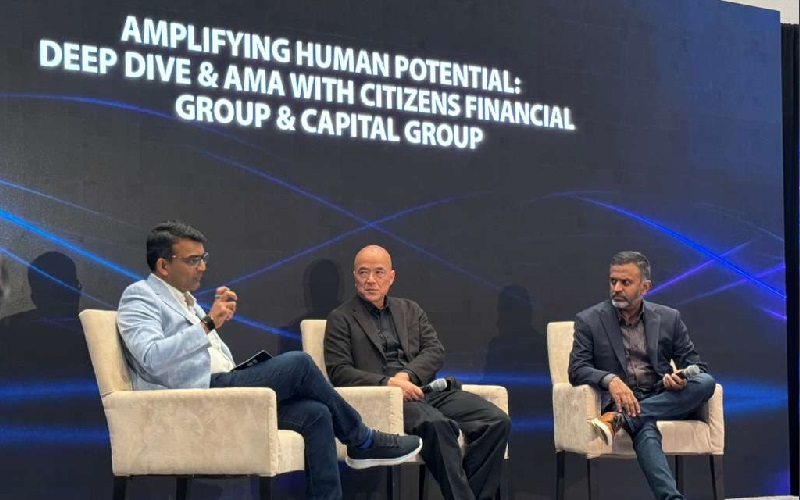
Deep Dive & AMA with Citizens Financial Group & Capital Group
From Hype to Habit: Making AI Real in Finance (Without Losing the Human Edge)
For Citizens Bank’s Chief Data and Analytics Officer, Krish Swamy and Capital Group’s Technology & Operations leader Steve Taw, the AI brief is simple: move beyond slideware to outcomes. That means educating the business, measuring value beyond cost, and hard-wiring reliability, security, and human judgment into every step.
Read more
Swamy’s “surprises” cut both ways. Negatively, even elite business leaders often lack AI/LLM basics—so literacy is step one. Positively, broad access to training unleashes hidden talent; a bank teller’s thank-you note for a self-serve data program became his favorite proof that people scale impact when given the chance. Citizens now prioritizes operational metrics (NPS, first-call resolution, year-one attrition) first—trusting financial gains to follow—while reminding teams that prompts, time, and shared best practices are as critical as models.
Taw frames AI as a top-10 strategic investment—funding enterprise enablement and a handful of transformative bets—while letting business units pilot, prove, and expand targeted wins (e.g., SDLC acceleration). The goal isn’t only efficiency; it’s doing more, faster. Watch the creeping cost of “GenAI add-ons” in SaaS, he cautions, and modernize wisely.
Both leaders stress pragmatism: traditional ML still delivers immediate ROI (fraud models, credit, marketing) but must ship in months, not years—demanding standard tools, better data, and risk partners who validate at speed. On agentic payments and AI-driven decisions, expect low-value, low-risk starts and gradual scaling; in money movement and investing, reliability and human conviction remain non-negotiable.
The execution blueprint
- Educate first: Lift AI literacy across business roles; share prompt patterns and time to practice.
- Value beyond cost: Anchor to CX and ops metrics; let P&L follow durable improvements.
- Dual-track funding: Enterprise-level “big bets” + BU pilots that graduate on evidence.
- Ship ML now: Standardize data/tooling and compress model cycles (12 months → 4).
- Human-in-the-loop: Keep reliability and judgment central for payments and investing.
- Security as a team sport: Infosec, data, risk, and engineering must co-evolve policies dynamically.
Bottom line: treat AI as habit, not hype—go small where risk demands, go fast where proof exists, and let people be the force multiplier.
Speakers

Deep Dive & AMA with Nutrien
Why moving beyond pilots—and embracing probabilistic systems—creates real advantage in agribusiness
Nutrien’s Debasis “DB” Bhaumik and Infosys’ Kapil Nanchalal unpacked what “AI-first” really means inside a global agri-food leader. The thrust: stop piloting, start building; wire AI into core agronomy and operations; and treat speed as strategy—not just efficiency.
Read moreDB framed Nutrien’s operating model around three lanes:
- Everyday AI (copilots that lift knowledge work and personal productivity)
- Targeted AI (continuous-improvement systems like vision models predicting underground conveyor failures)
- Game-changing AI (reimagining agronomy itself to grow farmer mindshare and revenue).
ROI follows accordingly: targeted AI often “pays for itself,” everyday AI becomes table stakes for talent and resilience, and game-changers deserve bold investment because disruption is inevitable.
On risk and competition, DB spotlighted two Nutrien moats—and where they could be attacked: the agronomist–grower relationship (deep trust that steers purchases) and a hyperlocal, time-critical supply chain. Both are defendable, but AI-native entrants can erode relationship and logistics edges if incumbents move slowly.
The hardest work is change management. Nutrien invested in “level-up” programs (DataQ, promptology) for broad literacy, top-down deep dives for leaders, and a cross-functional AI Council—more an engagement platform than a policing body—to share ownership of outcomes. DB stressed reframing from deterministic expectations to probabilistic reality: let AI generate plans, trends, and starting points; keep human judgment on safety-critical and financial close decisions.
On culture and pace, Nutrien prizes an action bias (“no POCs”) and accepts learning debt: moving fast once led the team to build chat capabilities that later overlapped with vendor tools; elsewhere, a modeling effort failed until sensor calibration caught up—humbling reminders that timing and foundations matter.
Key Takeaways
- No pilots—ship value: Treat speed as strategy; iterate in production.
- Three-lane model: Everyday, targeted CI, and game-changing AI.
- Defend the moats: Agronomist trust and local, time-critical supply.
- Probabilistic mindset: AI proposes; humans decide where stakes are high.
- Change is a team sport: Literacy programs + AI Council for shared accountability.
Speakers
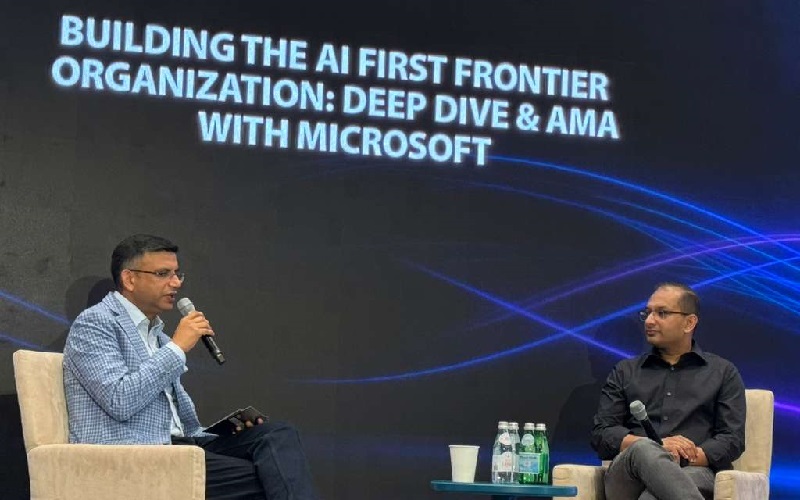
Deep Dive & AMA with Microsoft
Building Trust for the Agent Era
For Rudra Mitra, Corporate VP at Microsoft, AI and security are inseparable. As enterprises rush to deploy autonomous “agents,” Microsoft’s mission is clear: make identity the new perimeter, put data guardrails first, and embed defense natively into how AI is built, deployed, and audited. The near future, he noted, includes 1.3B+ enterprise agents, each requiring its own identity, least-privilege access, and policy controls.
Read moreWithout strong identity, data classification, and attack prevention, AI expands risk faster than value. With them, it compounds productivity safely.
Microsoft rejects “bolt-on later” security. Instead, security shifts left into the developer toolchain (e.g., Copilot Studio) and ops surface (observability of what agents accessed, under which credentials, and why). Purview becomes the nerve center: classifying and protecting sensitive data, enforcing DLP, capturing prompts/responses for legal and audit, and governing access as agents talk to agents. Defender addresses AI-specific threats (prompt injection, model tampering), while Entra formalizes agent identities and policies. Sentinel and an AI-assisted SOC complete the loop so human analysts can scale with machine speed.
Infosys’ role is twofold: co-build and land. Internally, Infosys applies Responsible AI (12-domain toolkit), embeds Purview via SDKs, and operationalizes governance. With clients, it moves from proofs to production—e.g., large Purview rollouts (25k+ users) with auto-classification, inline DLP, and Sentinel integration—turning blueprints into measurable outcomes.
Microsoft frames AI security across four execution pillars:
- Identity (Entra): Agents get first-class identities, least-privilege, and policy-as-code.
- Data (Purview): Classify, protect, and log every AI interaction; make governance developer-friendly.
- Defense (Defender): Detect and block AI-native threats (prompt injection, data exfil, model abuse).
- Operations (Sentinel): AI-assisted SOC for scale, speed, and end-to-end observability.
Message to leaders: AI will join the workforce at unprecedented scale. Trust won’t come from tools in isolation, but from identity-first design, data-centric governance, and disciplined, developer-embedded security that turns intelligence into resilient value.
Read less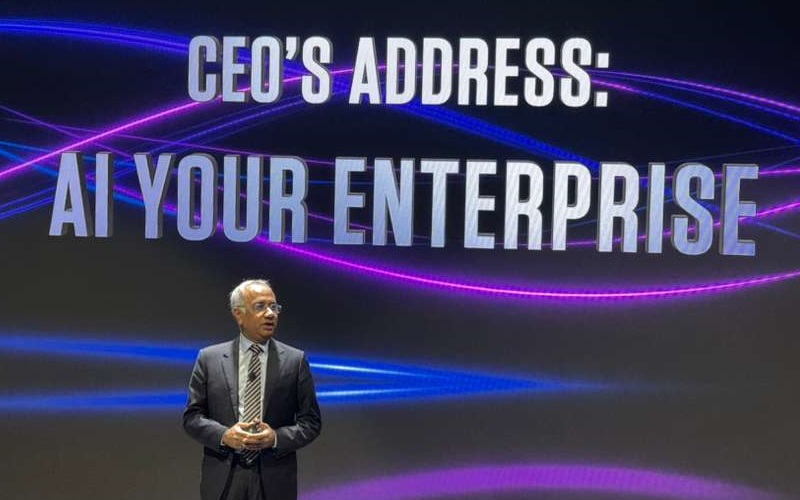
CEO's Address: AI Your Enterprise
AI at the Core: Infosys CEO Salil Parekh on Building for Scale and Trust
At a gathering of more than 200 client executives and partners, Infosys CEO Salil Parekh laid out a clear message: AI is no longer a side experiment. It’s reshaping enterprises now—and success depends as much on disciplined execution as on vision.
Infosys has already deployed 400 AI agents across industries, from financial services to telecom, and is one of the world’s largest users of GitHub Copilot.
Read more
Beyond adopting large language models, the company is also developing smaller, specialized models tailored to client needs. What distinguishes leaders, Parekh stressed, is readiness: firms with strong data infrastructure and cloud foundations move fastest in scaling AI. Cloud and data remain the bedrock of digital transformation. While most clients are in multi-cloud environments, success lies in preparing infrastructure for AI-driven workloads. Data maturity—modernizing legacy systems, managing structured and unstructured sources—has become the accelerator for AI adoption.
Infosys also highlighted its delivery-first DNA. Parekh shared a candid anecdote: a U.S. client CEO spent 20 minutes explaining why they replaced another vendor before praising Infosys’s project team. For Parekh, this underlines the company’s edge: not flashy marketing, but dependable execution at scale.
Key priorities include:
- Cost discipline: automation, lean practices, and AI-enabled productivity.
- Strategic platforms: deep expertise in SAP S/4HANA rollouts across regions.
- Partnerships & acquisitions: targeted deals in consulting and niche innovation, supported by an active partner ecosystem.
- Community impact: initiatives like Springboard, which has provided digital education to over 10 million people worldwide.
Parekh closed with the ethos of “One Infosys”—integrating capabilities across the firm to bring the full force of its expertise to every client engagement. In his words, innovation is vital, but delivery is the true differentiator.
Speaker
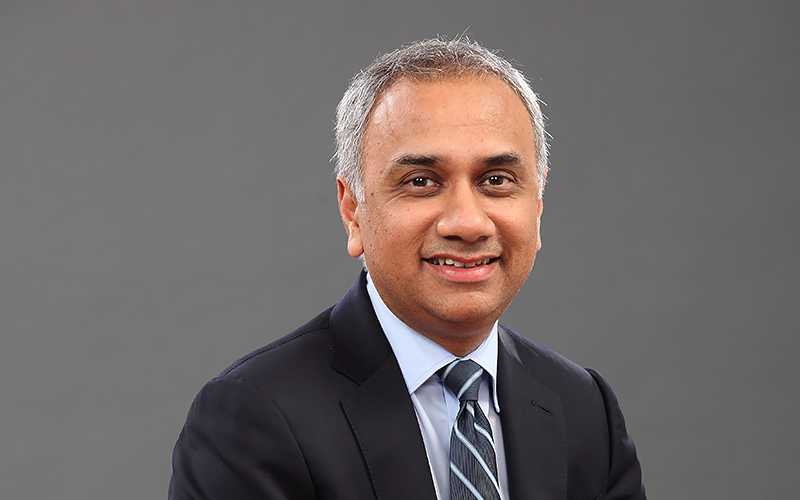
Salil Parekh, CEO & MD, Infosys
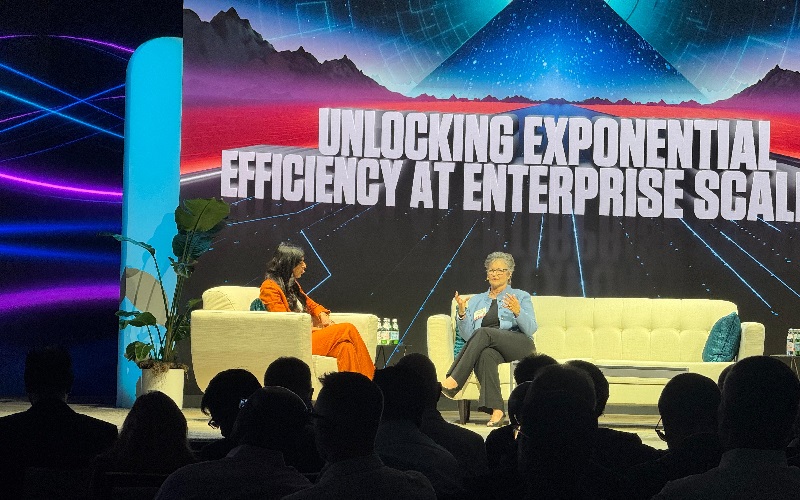
Unlocking Exponential Efficiency at Enterprise Scale: A Business Case Study of Kia
Kia’s AI Playbook: From Customer Care to Enterprise Efficiency
Kia’s transformation shows that AI is more than a tech upgrade—it’s a new model for scale. At the session Unlocking Exponential Efficiency at Enterprise Scale, Michelle Cameron shared how Kia uses AI in core services to grow without added cost.
Read moreThe starting point was daunting: an enormous library of manuals, safety systems, and product data that made responding to customer inquiries slow and inconsistent. Kia’s answer was to build a “24/7 Kia Librarian”—a GenAI system with a photographic memory of every manual, able to deliver precise answers in seconds. The impact has been measurable: a 5% increase in customer contacts handled, while reducing staffing needs by 12%.
Beyond search and support, Kia tackled inefficiencies in surprising places—including physical mail. By automating how scanned letters are read, classified, and routed, the company freed resources from manual drudgery and redirected them to higher-value work.
Crucially, Cameron underscored the human dimension of AI adoption. The first reaction from staff was fear—“Will my job go away?” Kia’s leadership responded by reframing AI as “augmented intelligence”, not artificial. By focusing on pain points that employees themselves identified—and positioning AI as a tool to make their jobs easier—the company built trust and enthusiasm.
Looking ahead, Kia is exploring agentic AI for content generation and automated customer responses, but with a cautious, internal-first rollout to ensure stability before customer-facing deployment. For Cameron, the next unlock is agility: the ability to pivot quickly as new regulatory and customer needs emerge.
The takeaway for leaders: efficiency gains are real, but the real differentiator is how you bring your people along. As Cameron put it, “AI’s value is making it easier for everyone to do the right thing.”
Moderator

Nayeema Raza, Journalist & Filmmaker
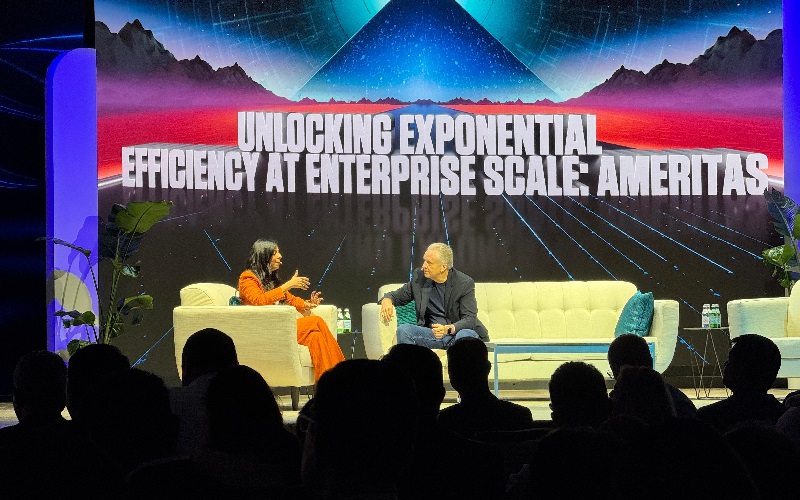
Unlocking Exponential Efficiency at Enterprise Scale: A Business Case Study of Ameritas
Ameritas on AI: From Experiments to Enterprise Reengineering
When Richard Wiedenbeck, Chief AI Officer at Ameritas, took the stage, he challenged a sacred cow of IT delivery: “Agile has failed us.” Despite decades of sprints and stand-ups, project success rates haven’t budged from 72%. For Wiedenbeck, the answer isn’t more methodology—it’s reengineering work itself, with AI at the core.
Read moreAmeritas, a 150-year-old diversified insurer, created the Chief AI Officer role to signal that AI is not just a tool but a strategic transformation lever. Wiedenbeck described a progression familiar to many firms: AI helps people do work, then AI does the work, and eventually, enterprises must rethink how work gets done altogether.
A striking example came from dental insurance claims. Six years ago, Ameritas deployed AI to read X-rays. Accuracy began at 60%, but rather than waiting for perfection, they kept it running alongside human review. Today, the system covers 28 dental procedures at 99.9% accuracy, with dentists now validating rather than redoing results. The lesson: adoption drives improvement, not endless piloting.
In back-office functions, Ameritas has shifted tasks like beneficiary or address changes to AI “assistants” (affectionately named Herbie). This reframes human roles from task execution to oversight and enablement. The payoff: measurable cost savings, higher quality scores, and scalable efficiency gains.
Wiedenbeck urged leaders to resist the instinct to pilot endlessly. “Don’t wait for perfect—implement, learn, and evolve.” AI, he argued, is the dumbest it will ever be today. It only improves with use and context. The risk of inaction is greater than the risk of imperfection.
For executives wrestling with AI strategy, Ameritas offers a bold takeaway: treat AI not as an add-on, but as the engine of a new era of enterprise reengineering—where human-AI synergy redefines efficiency, scale, and value.
Moderator

Nayeema Raza, Journalist & Filmmaker
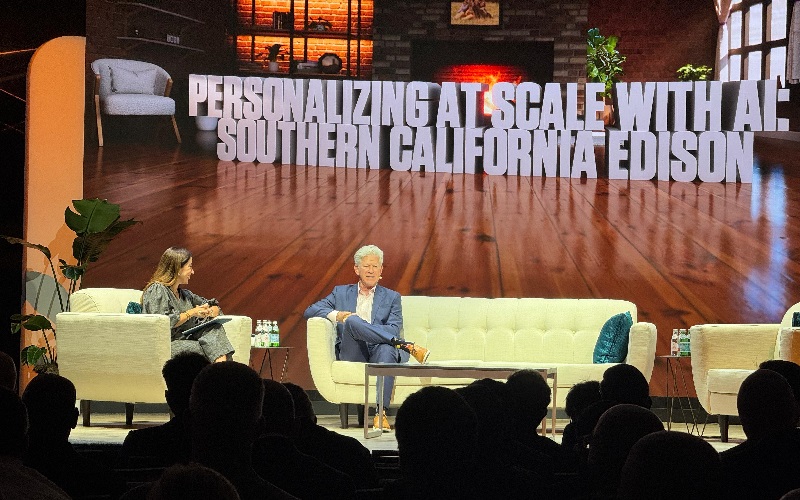
Personalizing at Scale with AI: A Business Case Study of Southern California Edison (SCE)
Southern California Edison: Scaling Personalization and Resilience with AI
For Todd Inlander, CIO of Southern California Edison (SCE), the future of utilities is defined by a paradox: rising demand for electricity and rising risks from climate events.
Read moreBy 2045, California expects 90% of vehicles and buildings to be electrified, driving an 80% increase in power demand and requiring a sevenfold increase in infrastructure investment. For SCE, meeting that challenge is impossible without AI. Inlander described how SCE is weaving AI into operations—not just generative AI, but also computer vision for equipment inspections and fault detection. Wildfires have made the stakes urgent: grid reliability and safety for 15 million Californians depend on accelerating adoption. “We cannot meet demand the normal way—by adding more people,” he stressed. AI is the only path to autonomy on the grid, resilience at scale, and cost-effective delivery.
Yet technology alone isn’t enough. Transformation in a 140-year-old, highly regulated utility requires cultural change. Employees fear job loss, and Inlander confronted this head-on: AI won’t take your job, but people who know AI will. The strategy is upskilling and reskilling, equipping teams with digital tools to ensure relevance in a fast-changing environment.
Surprises have come along the way. Wildfires underscored the urgency to move faster, while employee adoption of tools like Copilot has been slower than expected. The lesson: leadership must sponsor bold initiatives, accept failures, and encourage teams to experiment without fear.
SCE knows it cannot transform alone. Partnerships with Infosys, AWS, SAP, and other technology providers are critical to modernizing infrastructure and embedding AI into daily operations. For Inlander, the message is clear: in one of the world’s most progressive energy markets, the grid of the future will be built not just with steel and wires, but with intelligence, resilience, and trust.
Read less
Personalizing at Scale with AI: A Business Case Study of HPE
HPE on AI at Scale: Building the Infrastructure for the Next Decade
For Alain Carpentier, SVP of Worldwide Sales at HPE Networking, AI is no longer a future ambition—it’s the new business reality. But to deliver business outcomes, enterprises need the right infrastructure. Carpentier laid out HPE’s three-pillar approach: networking, hybrid IT, and AI clusters.
Read moreOn networking, HPE distinguishes between “network for AI”—building the next generation of data centers to support AI—and “AI for network”, using AI to simplify and automate network operations. A case in point: working with Infosys, HPE helped Siemens Energy modernize 10,000 network devices across multiple sites, introducing self-driving network concepts that both automate and secure critical infrastructure.
The second pillar, hybrid IT, is delivered through HPE GreenLake, which allows clients to manage workflows across on-premise and cloud environments, with AI agents streamlining orchestration. The third pillar is AI clusters: HPE is partnering with NVIDIA and others to enable enterprises to run AI workloads on their own infrastructure—giving them the flexibility of cloud with the control of on-prem.
HPE is backing this strategy with bold moves, notably its $14 billion acquisition of Juniper Networks, aimed at accelerating next-generation data center and AI networking capabilities. Carpentier positioned this as proof of HPE’s intent to lead in self-driving infrastructure, across compute, storage, networking, and cloud.
For business leaders, Carpentier’s message was clear: infrastructure must become invisible, autonomous, and outcomes-driven. The next decade could see IT leadership evolve as profoundly as mobility—with networks managing themselves much like self-driving cars.
His closing advice to executives: partner wisely, align with firms making serious AI investments, and ensure influence in shaping roadmaps. In a market moving at exponential speed, leadership will rest on building ecosystems strong enough to shape—not just follow—the future.
Read less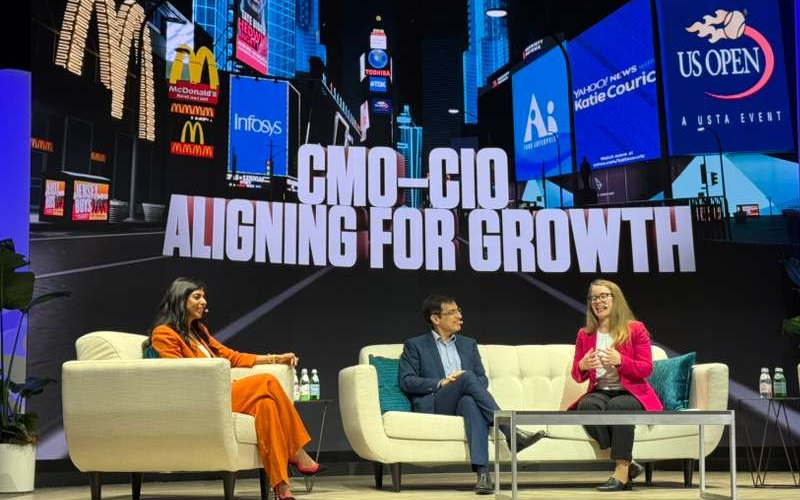
CMO-CIO: Aligning for Growth
CMO–CIO Collaboration: Turning AI Ambition into Business Impact
Marketers move fast. Technologists guard the rules. For decades, that tension created silos. But as AI reshapes growth strategies, CMOs and CIOs can no longer operate apart. Success now depends on shared vision, shared data, and joint execution.
In conversation, Sumit Virmani (CMO, Infosys) and Laura Hahn (Unit CIO & VP IT, Johnson Controls) examined why most AI deployments stall.
Read moreInfosys research shows only 48% of marketing AI initiatives deliver impact, while MIT finds over 90% struggle to extract value. The problem: treating AI as a side experiment rather than embedding it in core business processes.
Hahn argued that AI must move beyond proofs of concept and into scaled execution. Pilots have a role—but only if they lead to enterprise-wide rollout. Otherwise, organizations risk chasing novelty without capturing measurable value. Virmani agreed, cautioning that early AI was oversold as instant productivity. True impact, he stressed, comes when AI spans the full job-to-be-done lifecycle—from efficiency to customer experience to effectiveness.
Both leaders emphasized that data integration is now the critical differentiator. Without enterprise data stitched together across silos, personalization at scale remains an illusion. Hahn described the risk bluntly: companies that fail to unify data will face competitive disadvantage.
The human dimension also looms large. Employees worry that AI will erase jobs. Leaders must reframe AI as augmented intelligence—a tool to remove pain points and free people for higher-value work. Open communication, transparency, and embedding IT talent directly in marketing teams can help bridge trust and unlock innovation.
Virmani summed it up with an example: Infosys’s AI-powered personalized annual report, where every shareholder could appear on the cover. AI makes “magic at scale” possible—but only when CMOs and CIOs build together.
Moderator

Nayeema Raza, Journalist & Filmmaker
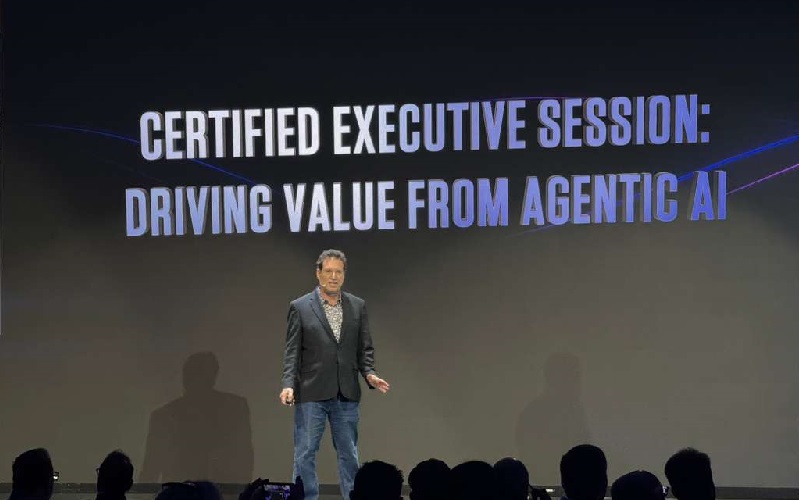
Certified Executive Session: Driving Value from Agentic AI
Agentic AI: Why Leaders Must Act Before the Curve Leaves Them Behind
AI isn’t moving linearly. It’s accelerating exponentially—and executives who wait for stability will be left behind. That was the stark message from Dr. Hod Lipson, professor of engineering and data science at Columbia University, in his workshop on Driving Value from Agentic AI.
Read moreLipson argued that agentic AI—AI with the capacity to act, decide, and improve itself—represents the next wave of disruption. From AI-powered teaching assistants outperforming professors to avatars selling millions in merchandise in hours, AI is rapidly taking on roles once considered uniquely human. The shift, he warned, is irreversible.
Executives often assume they can “catch up later.” Lipson dismantled that notion. AI’s compounding drivers—Moore’s law, explosive data growth, self-learning models, and cloud-driven scalability—make delay dangerous. The sooner firms deploy AI, the faster systems improve and the more valuable data they capture. Hesitation, by contrast, creates competitive drag.
For business leaders, the implications stretch far beyond efficiency. Marketing must prepare to sell to AI agents as much as human consumers. Healthcare will see AI-driven diagnostics and drug discovery that outpace human capabilities. Manufacturing and materials science will be reinvented through AI-generated designs unimaginable by traditional engineering.
Lipson was candid about limits: AI still struggles in the physical world, where manipulation and energy efficiency remain barriers. Yet advances in robotics, multimodal models, and facial interaction suggest those barriers will fall faster than expected. The real frontier, he suggested, is whether AI can become self-aware—imagining its own future self.
His advice was unambiguous: don’t wait, create. Begin experimenting, however imperfectly, because AI systems only improve with use. As Lipson concluded, “You cannot opt out of this curve. You can steer it—or be dragged along.”
Read less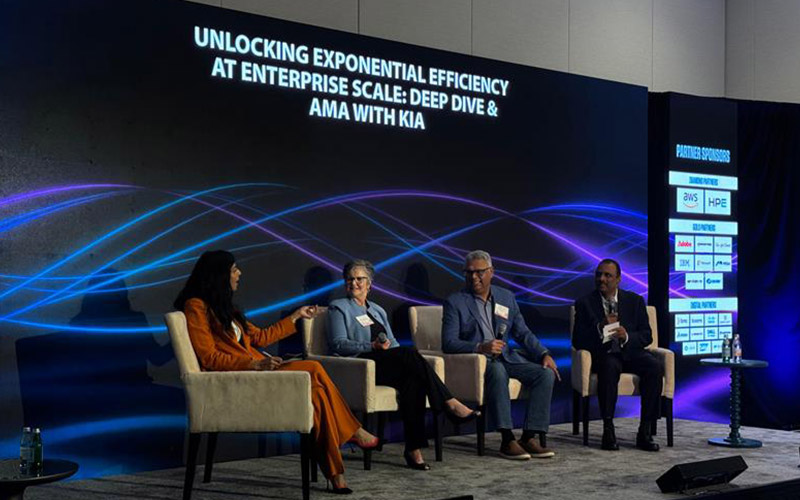
Deep Dive & AMA with Kia
Fusion of technology and culture: Unlocking enterprise-level efficiency
This deep dive session with Kia focused on the practical dimensions of unlocking enterprise-level efficiency and scaling it sustainably. Rather than framing efficiency as a cost-cutting exercise, Kia emphasized it as a strategic growth enabler — positioning Kia to handle more complexity without proportionally expanding resources.
Read moreA central theme was the fusion of technology and culture. On the technology side, automation and AI-powered solutions were highlighted as catalysts for exponential gains, enabling processes to run faster and with fewer errors. However, Kia cautioned that technology alone cannot deliver transformation. Without cultural adoption — where employees trust, embrace, and actively leverage new tools — the efficiency gains are limited.
The AMA format allowed for a practical exploration of real-world challenges:
- Overcoming skepticism from employees concerned about job displacement.
- Ensuring that leaders communicate the “why” behind efficiency initiatives.
- Balancing speed with accuracy when automating critical workflows.
Kia also pointed to prioritization as a guiding principle. Instead of dispersing resources, Ameritas focused on identifying the most impactful bottlenecks and addressing them in ways that delivered benefits across multiple departments. This approach created ripple effects, magnifying results beyond the immediate process improved.
Finally, the conversation reinforced a customer-first mindset. Exponential efficiency is not simply an internal metric; it is measured by how effectively and reliably the organization delivers value to clients.
Key Takeaways
- Efficiency is a growth enabler, not just cost reduction.
- Tech + culture fusion is essential — adoption drives outcomes.
- Communicate the “why” to overcome resistance and fears.
- Focus on high-impact bottlenecks for maximum ripple effect.
- True efficiency must be customer-centered in outcomes.
Moderator

Nayeema Raza, Journalist & Filmmaker
Speakers
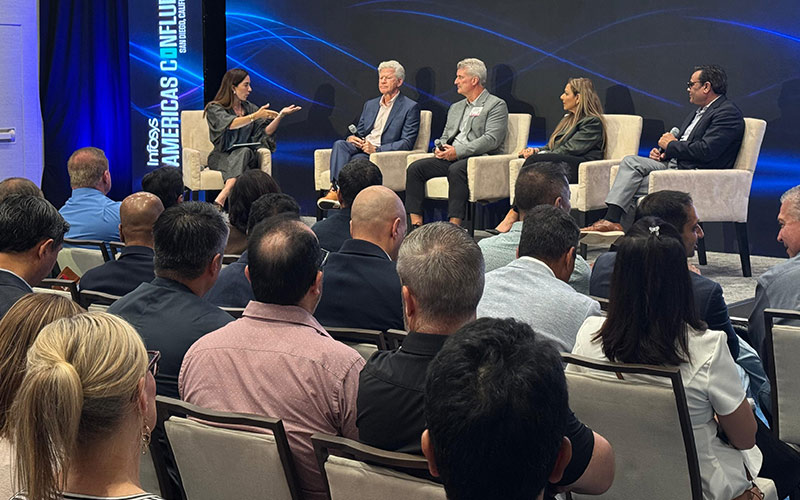
Deep Dive & AMA with Southern California Edison & AWS
Scaling Personalization with AI: How enterprises can unify data, AI, and customer trust
This session, delivered by SCE in collaboration with AWS, focused on the opportunities and challenges of implementing personalization at enterprise scale through AI. The speaker positioned personalization not only as a differentiator but as a necessity for modern customer engagement.
Read moreThe first theme highlighted the central role of data. Effective personalization depends on aggregating and normalizing vast amounts of data from multiple sources. AWS tools and cloud infrastructure were discussed as enablers for handling the volume, velocity, and variety of customer data securely and efficiently.
Second, the session addressed AI-powered scaling. Machine learning models can dynamically tailor content, offers, and recommendations to individual users in real-time. This capability allows organizations to serve millions of customers with individualized experiences that would be impossible through manual approaches.
However, the discussion underscored that technology alone is insufficient. Enterprises must embed personalization within their strategic vision and align cross-functional teams to support it. Successful adoption requires collaboration between IT, marketing, product, and compliance functions.
Trust emerged as a key factor. Customers expect personalization to feel helpful, not intrusive. The speaker stressed the importance of responsible AI practices: transparency, opt-in mechanisms, and clear communication about how data is used. Compliance frameworks and AWS’s governance capabilities were presented as critical components for building long-term trust.
The AMA format also surfaced practical barriers: resistance to change, gaps in data readiness, and the need to reskill teams to interpret AI outputs and apply them effectively.
Key Takeaways
- Personalization at scale is now essential for customer engagement.
- Data unification and cloud infrastructure are prerequisites for success.
- AI enables real-time, dynamic personalization for millions simultaneously.
- Cross-functional alignment ensures sustainable adoption.
- Trust and responsible AI practices are vital for customer confidence.
Speakers
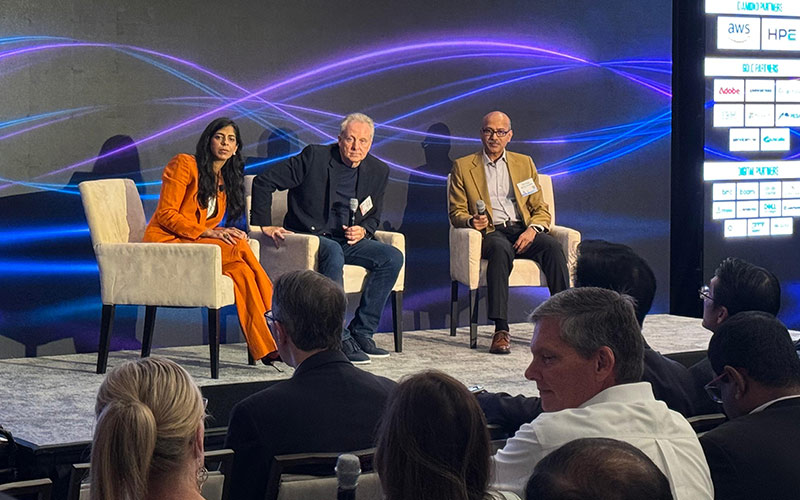
Deep Dive & AMA with Ameritas
Scaling Smarter: How AI, automation, and cultural adoption transformed enterprise workflows
The session centered on how Ameritas approached the challenge of achieving efficiency and scalability in their enterprise operations. The speaker emphasized that “exponential efficiency” is not about squeezing employees harder but about leveraging smarter systems, automation, and technology to scale without proportionally increasing costs or headcount.
Read moreA key theme was the integration of AI and intelligent automation across workflows. Instead of siloed tools, Ameritas built interconnected processes that allow data and tasks to flow seamlessly between departments. This reduced redundancies, sped up decision-making, and improved accuracy in routine operations.
Another important element discussed was change management. Efficiency gains required not only the right technology but also strong buy-in from leadership and teams. The company invested in training, clear communication, and aligning new tools with employee needs. This cultural adoption ensured that automation was seen as empowering rather than threatening.
The session also highlighted the shift in enterprise mindset: moving away from incremental improvements (e.g., shaving minutes off a process) toward exponential scaling opportunities. By identifying bottlenecks that affected multiple departments and solving them holistically, Ameritas achieved outsized results.
Finally, the discussion stressed customer-centricity — efficiency is not just internal. Faster, more accurate, and scalable processes ultimately translated to better service quality, reduced errors, and enhanced client trust.
Key Takeaways
- Exponential efficiency = scaling intelligently, not simply working harder.
- AI & automation integration across workflows removes silos and boosts accuracy.
- Change management and cultural adoption are as critical as the tech itself.
- Focus on enterprise-wide bottlenecks for outsized impact.
- Efficiency gains should always align with customer experience improvements.
Moderator

Nayeema Raza, Journalist & Filmmaker
Speakers
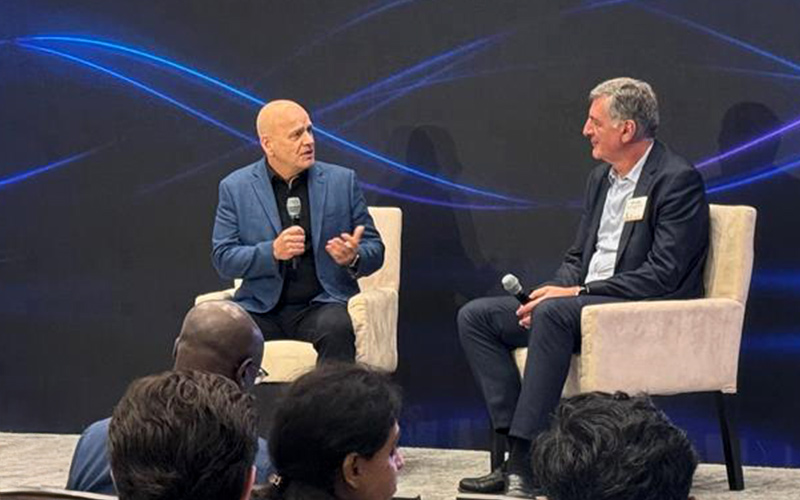
Deep Dive & AMA with HPE
Harnessing AI for Enterprise Growth: Balancing automation, data, and human touch in personalization
This session, led by HPE in a deep-dive AMA format, explored how enterprises can leverage AI to personalize at scale without losing the human touch. The central argument was that personalization is no longer a luxury; it is an expectation. Achieving it at enterprise scale, however, requires a deliberate combination of AI-driven automation and human-guided strategy.
Read moreThe discussion emphasized three pillars of personalization:
- Data integration and accuracy — AI requires clean, reliable data sources that cut across silos. Poor data hygiene undermines personalization at scale, producing fragmented customer experiences.
- Adaptive automation — Intelligent AI systems can adjust in real-time to customer preferences, behaviors, and context. This capability enables personalized experiences at speed and scale, something manual approaches cannot match.
- Human oversight — While AI enables scalability, humans ensure empathy and judgment. The session highlighted that AI should augment decision-making, not replace it, particularly in sensitive customer interactions.
Keen attention was given to governance and trust. Enterprises must ensure transparency in how AI-driven personalization works, so that customers feel empowered rather than manipulated. Ethical guidelines and compliance structures were discussed as essential safeguards.
Finally, the AMA tackled practical adoption barriers:
- Overcoming resistance to AI-driven change.
- Training teams to interpret AI outputs.
- Aligning personalization initiatives with broader enterprise goals.
The session concluded by reframing personalization as a growth driver — delivering measurable improvements in customer satisfaction, loyalty, and enterprise efficiency.
Key Takeaways
- Personalization is a customer expectation, not optional.
- Clean, integrated data is the foundation of scalable personalization.
- AI enables real-time adaptation, while humans provide empathy and oversight.
- Governance and trust are critical for adoption and customer confidence.
- Personalization, done right, is a direct growth accelerator.
Speakers

The Keys to Success
Chris Gardner on Resilience, Focus, and the Power of Plan A
When Chris Gardner—whose life inspired The Pursuit of Happyness—takes the stage, his story lands with both gravity and clarity. Homeless yet never hopeless, Gardner reminds us that adversity is not the headline of a life; grit, character, and vision are. Gardner traces his journey from sleeping in subway stations with his infant son to building a multimillion-dollar brokerage. His philosophy? World-class or nothing.
Read more
Being “pretty good” doesn’t change industries—or lives. He challenges leaders to ask themselves: when someone asks who’s the best in your field, is your name mentioned? And if not, why not?
Central to his message is the rejection of fallback options. “Plan B sucks,” Gardner says with conviction. If Plan B were any good, it would already be Plan A. Greatness—whether Michael Jordan’s championships or Oprah Winfrey’s media reign —comes from singular focus.
But focus doesn’t mean rigidity. Gardner highlights the importance of “hard pivots”—decisions we would never choose, but must make work. For him, that meant learning to connect with audiences virtually during the pandemic, embracing new tools without abandoning authenticity.
Gardner also reframes success through integrity and resilience. In hiring, he shredded résumés to ask candidates not about achievements, but about failures: What scar tissue do you carry? What did you learn? Scar tissue, he insists, is the true signature of survival.
For leaders navigating today’s volatility, Gardner’s counsel is deceptively simple: trust your gut, guard your integrity, and commit fully. Above all, value time—the one asset you can never regain. His closing words resonate as a call to action: “Now is the new next. Do it now. Say it now. Be it now. Because tomorrow is never guaranteed.”
Read less
AI and the Future of Legal and Compliance
AI is transforming how businesses manage legal and compliance challenges. On day 2, Inderpreet Sawhney, EVP and Chief Legal Officer at Infosys, explores how AI ensures ethical governance and regulatory adherence.
As AI adoption grows, 78% of enterprises view ethical AI as a top priority, yet only 2% have the highest responsible AI standards in place. This report examines how businesses can balance innovation with accountability—key themes of this session.
Stay tuned for live updates during the event!

Bridging the CMO-CIO Divide for Business Growth
Strong collaboration between marketing and IT leaders drives growth and innovation. On day 2, Laura Hahn from Johnson Controls and Sumit Virmani from Infosys will discuss how aligning CMO and CIO priorities helps businesses future-proof their strategies.
Organizations with strong CMO-CIO partnerships are better equipped to navigate digital transformation. Read this report to see how businesses can adapt to a tech-driven marketing landscape—key themes of this session.
Stay tuned for live updates during the event!

Quantifying the Real Business Value of AI
Many businesses struggle to measure AI’s impact on outcomes. On day 2, Jayesh Sanghrajka, EVP & Group CFO at Infosys, explains how to quantify AI’s value and use it to drive strategic decisions.
Only 26% of organizations have a clear framework to measure AI’s ROI. This report highlights how businesses can unlock measurable value from AI investments—an essential backdrop to this session.
Stay tuned for live updates during the event!

Scaling Personalization with AI: The Enterprise Advantage
Want to scale hyper-personalized experiences? On day 2, Todd L. Inlander and Kurt Sweetser from Southern California Edison (SCE) reveal how they use AI to transform customer engagement and streamline operations.
Businesses that embed AI strategically can see 40% improvements in decision-making speed and customer satisfaction. Read this framework to understand how energy firms can use AI to drive personalization and efficiency—key themes of this session.
Stay tuned for live updates during the event!

The Future of Efficiency in the Automotive Industry
By 2025, over 70% of automotive companies are expected to prioritize digital ecosystems to drive operational efficiency. In this day 2 session, Michele Cameron and Subba Kethu from Kia America will share how the company is transforming its operations to meet evolving customer expectations and industry demands. This session will delve into how Kia is staying ahead of the curve.
Stay tuned for live updates during the event!



